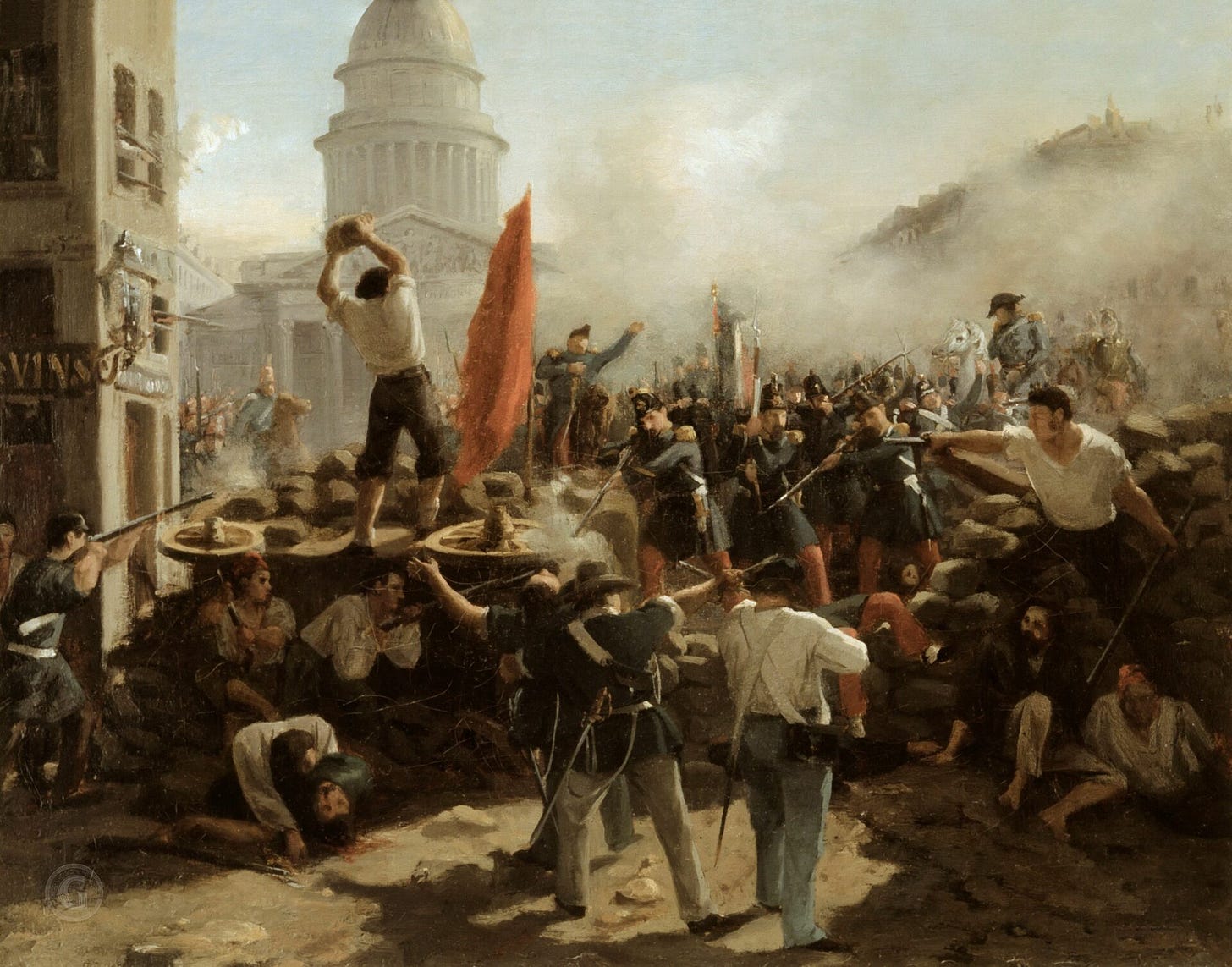Buongiorno amici:
The history of a nation defines in many aspects the trajectory of its cuisine.
War in Northern Italy, 1848-49
In the wake of the March revolution in Milan, Radetzky retreated from Lombardy to the security of the Quadrilateral fortresses, setting up headquarters at Verona. By early April, desertions by Italian troops and the capitulation of isolated garrisons in Venice and other cities reduced the strength of the Austrian army in northern Italy by one-third.
After supporting the rebels, Sardinia-Piedmont occupied Lombardy and sent troops across the Mincio into western Venetia. The campaign’s turning point came at Santa Lucia (May 6), where the Sardinians suffered heavy losses attacking Radetzky’s fixed positions. Strengthened by reinforcements from neighboring Austrian provinces, Radetzky took the offensive and, at Vicenza (June 10), defeated Giovanni Durando’s force of Papal regulars and Italian volunteers, thus eliminating the most significant rebel force in the Veneto. After detaching troops to besiege Venice, Radetzky reengaged the Sardinians and defeated Charles Albert’s army at Custozza (July 25). Austrian troops reoccupied Lombardy with little resistance, entering Milan on August 6. An Austro-Sardinian armistice left all of Lombardy and Venetia under Austrian control except for the city of Venice. Aside from the initial uprisings of March, the Lombard and Venetian contribution to the Italian war effort was negligible. Only a few thousand Lombards followed the Sardinian army into Venetia, and rebel leaders in Venice, preoccupied with the defense of their city, did little to organize the Veneto. Eventually, everyone gave up the belated attempt by Garibaldi to organize a campaign in the Alps after the armistice.
In the Adriatic, the Venetian revolution divided the predominantly Italian Austrian navy: Austria retained most warships, while Venice was loyal to most officers and seamen. A reorganized Austrian navy blockaded Venice from late April to late May but withdrew to Trieste after Sardinian and Neapolitan squadrons appeared in the upper Adriatic. These forces, joined by Venetian ships, imposed a blockade on Trieste, subsequently abandoned by the Neapolitans in June and broken off altogether after the Austro-Sardinian armistice of August. The Austrians reimposed a nominal blockade of Venice for the winter of 1848-49 while the army continued its siege from the land side.

General Radensky
In mid-March 1849, Sardinia-Piedmont denounced the armistice and prepared to invade Lombardy with a reorganized army under the command of a Polish emigré, Wojciech Chrzanowsky. Rather than assume a defensive posture, Radetzky quickly invaded Piedmont and crushed the Sardinians at Novara (March 23). Charles Albert sued for peace and abdicated in favor of his son, Victor Emmanuel II. During the spring of 1849, detachments from Radetzky’s army suppressed an uprising at Brescia, then occupied Parma, Modena, Tuscany, and the Romagna, leaving Venice as the only remaining outpost of revolution in northern Italy.
The Austrian navy imposed a rigorous blockade on Venice in the spring of 1849, and the army intensified its siege over the summer, shelling the city daily from late July onward. Venetian naval sorties in mid-August failed to break the blockade. The war in northern Italy ended on August 22, 1849, with the surrender of Venice.














